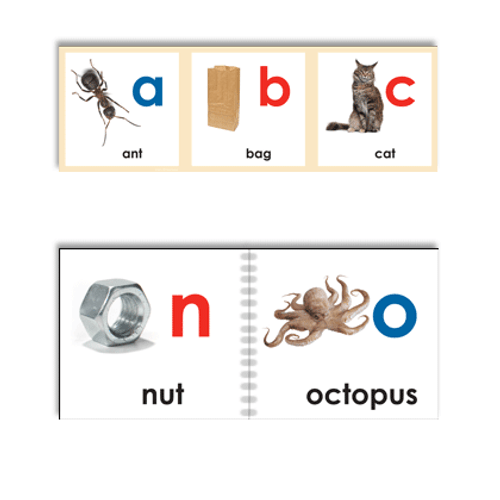In the ETC Montessori 9 step language acquisition and development program, this set of materials meets the requirements necessary to do the presentations for:
- step 1 - Object recognition
- Step 2 - Object to picture matching
- Step 3 - Picture to picture matching
- Step 4 - Same object different perspectives sorting
Includes two containers.
This set of cards has been designed to incorporate current brain research. The scientific approach in both the presentation as well as the indirect aims of each set is aimed at forming the basis for higher level thinking skills in very young children. The idea is to allow children to generalize from the specific object to a much broader definition or general category be it fruits, vegetables, or animals. Based on the pictures, children are also afforded the benefit of developing the concept that objects in general, may be viewed from different vantage points, and have different visual perspectives, while still retaining the general characteristics of the said object. So, an apple is still an apple if viewed from the side, top, or bottom.
Each set is a comprehensive study that may be broken down into three different activities. However, put together, the set retains the full continuum of thought.
- Activity 1: Object to picture.
- Activity 2: Picture to picture matching, and
- Activity 3: Three pictorial views of the object.
Included in the set is a full collection of realistic figures of fruit that are large and easy to handle by toddler standards:
- Apple
- Banana
- Lemon
- Orange
- Strawberry
- Pear
The large objects included are to scale in relationship to each other, so that young children may begin to understand the importance of size. The pictures on the cards are spot-on direct lifelike images of the objects.
Since there are multiple activities in each set, the teacher has the option of dividing the set either by activities or by number of repetitions. In designing each set, we have done so by allowing total flexibility in language development and indirect preparation for symbolic representation of everyday objects.
The fruits are divided into common fruits for set 1, and less common fruits for set 2.










